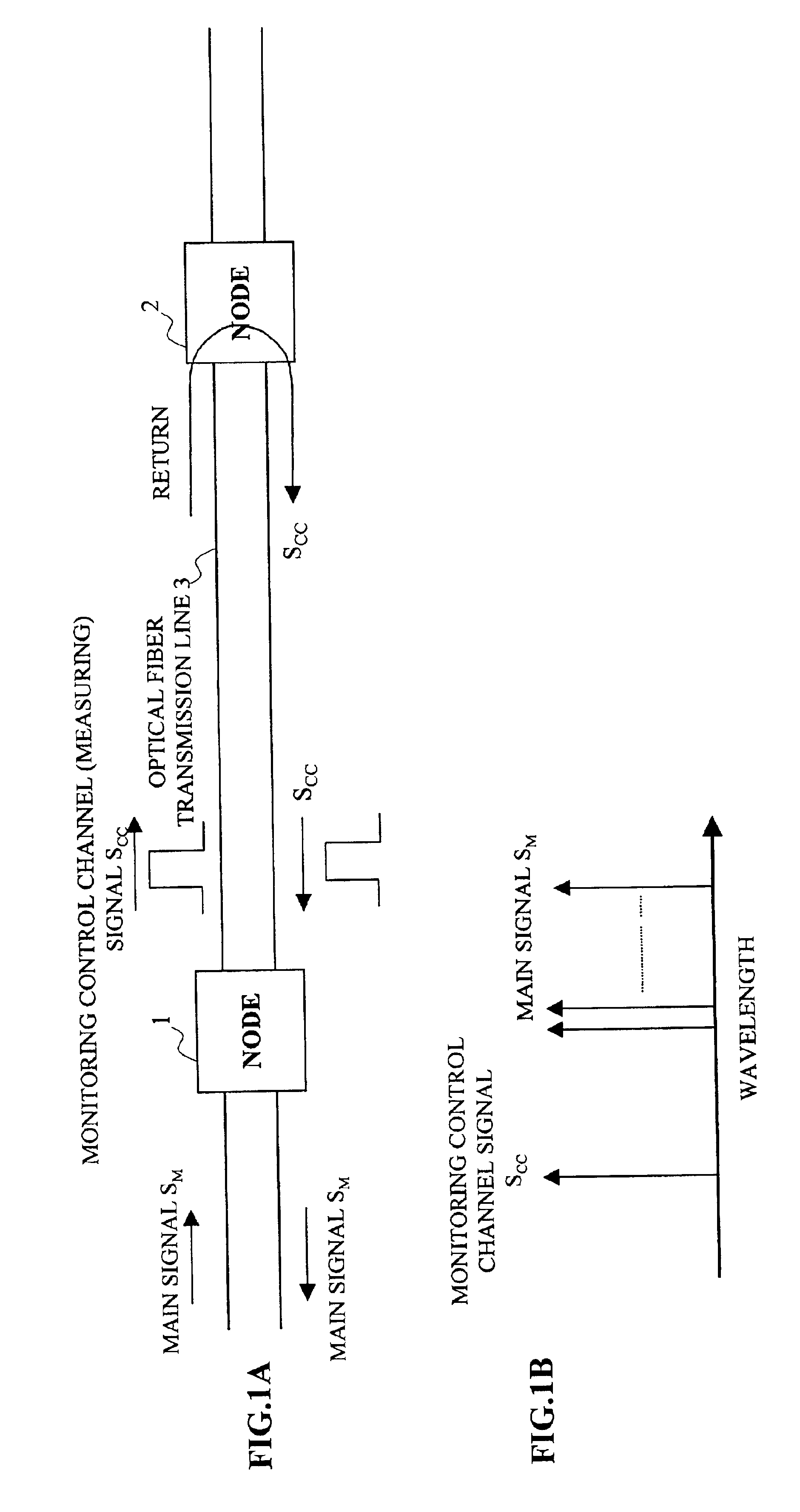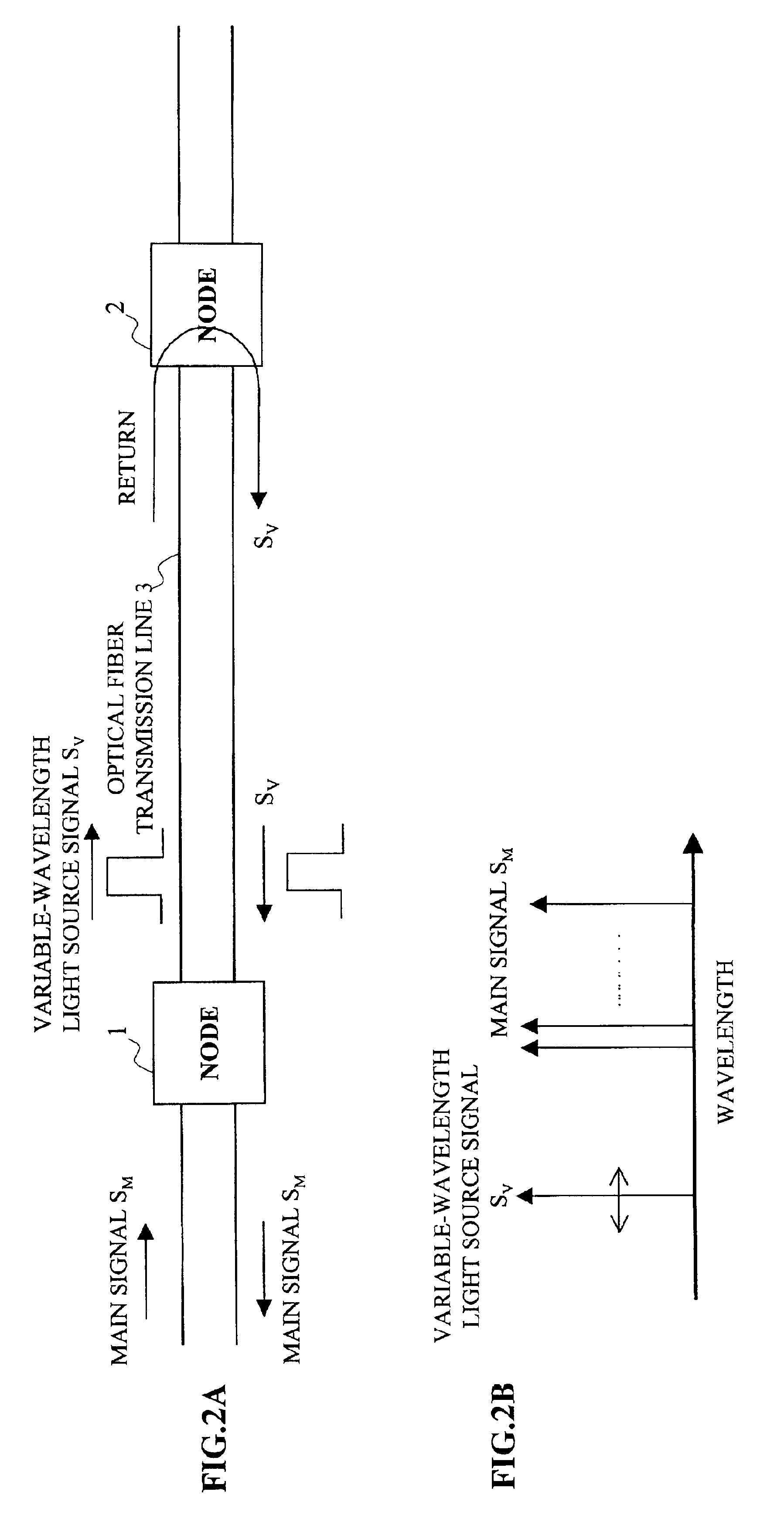Method of measuring wavelength dispersion amount and optical transmission system
a wavelength dispersion amount and wavelength technology, applied in the field of wavelength dispersion amount measurement and optical transmission system, can solve the problems of waveform distortion (pulse broadening), limiting transmission length, increasing costs, etc., and achieve the effect of high-quality transmission
- Summary
- Abstract
- Description
- Claims
- Application Information
AI Technical Summary
Benefits of technology
Problems solved by technology
Method used
Image
Examples
Embodiment Construction
FIGS. 1A and 1B show an embodiment (1) of a method of measuring a wavelength dispersion amount and an optical transmission system according to the present invention. In this embodiment, nodes 1 and 2 composing an optical transmission system are connected with an optical fiber transmission line 3 composed of outgoing and incoming paths, where a main signal SM goes back-and-forth.
This system is configured such that a monitoring control channel signal Scc, that is the measuring signal, is transmitted from the transmission node, the node 1 (the first node), to the reception node, to the node 2 (opposing node), and is returned at the opposing node 2 to the node 1.
As shown in FIG. 1B, this monitoring control channel signal Scc is wavelength-division-multiplexed into the main signal SM.
At the node 1, a delay time T1 required for the return of the monitoring control channel signal Scc is measured, and from this delay time T1 a length L (km) of an optical fiber transmission line 3 is obtaine...
PUM
| Property | Measurement | Unit |
|---|---|---|
| wavelength dispersion | aaaaa | aaaaa |
| length | aaaaa | aaaaa |
| wavelength | aaaaa | aaaaa |
Abstract
Description
Claims
Application Information
 Login to View More
Login to View More - R&D
- Intellectual Property
- Life Sciences
- Materials
- Tech Scout
- Unparalleled Data Quality
- Higher Quality Content
- 60% Fewer Hallucinations
Browse by: Latest US Patents, China's latest patents, Technical Efficacy Thesaurus, Application Domain, Technology Topic, Popular Technical Reports.
© 2025 PatSnap. All rights reserved.Legal|Privacy policy|Modern Slavery Act Transparency Statement|Sitemap|About US| Contact US: help@patsnap.com



